Large-Scale Oceanic Variability Associated with the Madden-Julian Oscillation during the CINDY/DYNAMO Field Campaign from Satellite Observations
Abstract
:1. Introduction
2. Data
3. Results
3.1. Westerly Wind Events Associated with the MJO
3.2. Local Ocean Response to Westerly Wind Events
3.2.1. Dynamical Response: Equatorial Jet and SSH
3.2.2. Sea Surface Temperature
3.3. Remote Response to the MJO Events
3.4. Surface Salinity
4. Summary and Discussion
Acknowledgments
References
- Madden, R.A.; Julian, P.R. Description of global-scale circulation cells in the tropics with a 40–50 day period. J. Atmos. Sci. 1972, 29, 1109–1123. [Google Scholar]
- Zhang, C. Madden-Julian oscillation. Rev. Geophys. 2005, 43, RG2003. [Google Scholar]
- Lin, J.-L.; Kiladis, G.N.; Mapes, B.E.; Weickmann, K.M.; Sperber, K.R.; Lin, W.; Wheeler, M.C.; Schubert, S.D.; Del Genio, A.; Donner, L.J.; et al. Tropical intraseasonal variability in 14 IPCC AR4 climate models. Part I: Convective signals. J. Clim. 2006, 19, 2665–2690. [Google Scholar]
- Hung, M.-P.; Lin, J.-L.; Wang, W.; Kim, D.; Shinoda, T.; Weaver, S.J. MJO and convectively coupled equatorial waves simulated by CMIP5 climate models. J. Clim. 2013, in press.. [Google Scholar]
- Yoneyama, K.; Zhang, C.; Long, C.N. Tracking pulses of the Madden-Julian oscillation. Bull. Amer. Meteorol. Soc. 2013, in press.. [Google Scholar]
- Shinoda, T. Observed dispersion relation of Yanai Waves and 17-day tropical instability waves in the Pacific Ocean. SOLA 2010, 6, 17–20. [Google Scholar]
- Shinoda, T. Observation of first and second baroclinic mode Yanai waves in the ocean. Quart. J. Roy. Meteor. Soc. 2012, 138, 1018–1024. [Google Scholar]
- Farrar, J.T.; Durland, T.S. Wavenumber-frequency spectra of inertia-gravity and mixed rossby-gravity waves in the equatorial Pacific Ocean. J. Phys. Oceanogr. 2012, 42, 1859–1881. [Google Scholar]
- Lee, T.; Lagerloef, G.; Gierach, M.M.; Kao, H.-Y.; Yueh, S.; Dohan, K. Aquarius reveals salinity structure of tropical instability waves. Geophys. Res. Lett. 2012, 39, L12610. [Google Scholar]
- Lagerloef, G.S.E.; Mitchum, G.T.; Lukas, R.B.; Niiler, P.P. Tropical Pacific near-surface currents estimated from altimeter, wind, and drifter data. J. Geophys. Res. 1999, 104, 313–326. [Google Scholar]
- Bonjean, F.; Lagerloef, G.S.E. Diagnostic model and analysis of the surface currents in the tropical Pacific Ocean. J. Phys. Oceanogr. 2002, 32, 2938–2954. [Google Scholar]
- Shinoda, T.; Kiladis, G.N.; Roundy, P.E. 2009: Statistical representation of equatorial waves and tropical instability waves in the Pacific Ocean. Atmos. Res. 2009, 94, 37–44. [Google Scholar]
- Shinoda, T.; Hurlburt, H.E.; Metzger, E.J. Anomalous tropical ocean circulation associated with La Nina Modoki. J. Geophys. Res. Oceans 2011, 116, C12001. [Google Scholar]
- Liebmann, B.; Smith, C.A. Description of a complete (interpolated) outgoing longwave radiation dataset. Bull. Amer. Meteorol. Soc. 1996, 77, 1275–1277. [Google Scholar]
- Kalnay, E.; Kanamitsu, M.; Kistler, R.; Collins, W.; Deaven, D.; Gandin, L.; Iredell, M.; Saha, S.; White, G.; Woollen, J.; et al. The NCEP/NCAR 40-year reanalysis project. Bull. Amer. Meteorol. Soc. 1996, 77, 437–471. [Google Scholar]
- Lagerloef, G.; Colomb, F.R.; Le Vine, D.; Wentz, F.; Yueh, S.; Ruf, C.; Lilly, J.; Gunn, J.; Yi, C.; Decharon, A.; et al. The Aquarius/SAC-D mission: Designed to meet the salinity remote-sensing challenge. Oceanography 2008, 21, 68–81. [Google Scholar]
- Lagerloef, G.; Wentz, F.; Yueh, S.; Kao, H.-Y.; Johnson, G.C.; Lyman, J.M. Aquarius satellite mission provides new, detailed view of sea surface salinity—State of the climate in 2011. Bull. Amer. Meteorol. Soc. 2012, 93, S70–S71. [Google Scholar]
- Huffman, G.J.; Adler, R.F.; Bolvin, D.T.; Gu, G.; Nelkin, E.J.; Bowman, K.P.; Stocker, E.F.; Wolff, D.B. The TRMM multi-satellite precipitation analysis: Quasi-global, multi-year, combined-sensor precipitation estimates at fine scale. J. Hydrometeor. 2007, 8, 33–55. [Google Scholar]
- Gaiser, P.W.; Germain, K.M.S.; Twarog, E.M.; Poe, G.A.; Purdy, W.; Richardson, D.; Grossman, W.; Jones, W.L.; Spencer, D.; Golba, G.; et al. The WindSat space borne polarimetric microwave radiometer: Sensor description and early orbit performance. IEEE Trans. Geosci. Remote Sens. 2004, 42, 2347–2361. [Google Scholar]
- Reynolds, R.W.; Smith, T.M.; Liu, C.; Chelton, D.B.; Casey, K.S.; Schlax, M.G. Daily high-resolution-blended analyses for sea surface temperature. J. Clim. 2007, 20, 5473–5496. [Google Scholar]
- McPhaden, M.J.; Meyers, G.; Ando, K.; Masumoto, Y.; Murty, V.S.N.; Ravichandran, M.; Syamsudin, F.; Vialard, J.; Yu, L.; Yu, W. RAMA: The research moored array for African-Asian-Australian monsoon analysis and prediction. Bull. Amer. Meteorol. Soc. 2009, 90, 459–635. [Google Scholar]
- Fairall, C.; Bradley, E.F.; Rogers, D.P.; Edson, J.B.; Young, G.S. The TOGA COARE bulk flux algorithm. J. Geophys. Res. 1996, 101, 3747–3764. [Google Scholar]
- Yoshida, K. A theory of the cromwell current and of the equatorial upwelling-an interpretation in a similarity to a coastal circulation. J. Oceanogr. Soc. Jpn. 1959, 15, 159–170. [Google Scholar]
- Shinoda, T.; Jensen, T.; Flatau, M.; Chen, S. Surface wind and upper ocean variability associated with the Madden-Julian Oscillation simulated by the Coupled Ocean/Atmosphere Mesoscale Prediction System (COAMPS). Mon. Wea. Rev 2013, in press.. [Google Scholar]
- Kessler, W.S.; McPhaden, M.J.; Weickmann, K.M. Forcing of intraseasonal Kelvin waves in the equatorial Pacific Ocean. J. Geophys. Res. 1995, 100, 10613–10631. [Google Scholar]
- Cravatte, S.; Picaut, J.; Eldin, G. Second and first baroclinic Kelvin modes in the equatorial Pacific at intraseasonal time scales. J. Geophys. Res. 2003, 108, 3266. [Google Scholar]
- Roundy, P.E.; Kiladis, G.N. Observed relationships between oceanic Kelvin waves and atmospheric forcing. J. Clim. 2006, 19, 5253–5272. [Google Scholar]
- Shinoda, T.; Roundy, P.E.; Kiladis, G.N. Variability of intraseasonal Kelvin waves in the equatorial Pacific Ocean. J. Phys. Oceanogr. 2008, 38, 921–944. [Google Scholar]
- Iskandar, I.; McPhaden, M.J. Dynamics of wind-forced intraseasonal zonal current variations in the equatorial Indian Ocean. J. Geophys. Res. 2011, 116, C06019. [Google Scholar]
- Nagura, M.; McPhaden, M.J. The dynamics of wind-driven intraseasonal variability in the equatorial Indian Ocean. J. Geophys. Res. 2012, 117, C02001. [Google Scholar]
- Krishnamurti, T.N.; Osterhof, D.K.; Mehta, A.V. Air-Sea interaction on the time scale of 30 to 50 days. J. Atmos. Sci. 1988, 45, 1304–1322. [Google Scholar]
- Zhang, C. Atmospheric intraseasonal variability at the surface in the tropical western Pacific Ocean. J. Atmos. Sci. 1996, 53, 739–758. [Google Scholar]
- Shinoda, T.; Hendon, H.H.; Glick, J. Intraseasonal variability of surface fluxes and sea surface temperature in the tropical western Pacific and Indian Ocean. J. Clim. 1998, 11, 1685–1702. [Google Scholar]
- Shinoda, T.; Hendon, H.H. Mixed layer modeling of intraseasonal variability in the tropical western Pacific and Indian Oceans. J. Clim. 1998, 11, 2668–2685. [Google Scholar]
- Shinoda, T.; Hendon, H.H. Upper ocean heat budget in response to the Madden-Julian Oscillation in the western equatorial Pacific. J. Clim. 2001, 14, 4147–4165. [Google Scholar]
- Woolnough, S.J.; Slingo, J.M.; Hoskins, B.J. The relationship between convection and sea surface temperature on intraseasonal timescales. J. Clim. 2000, 13, 2086–2104. [Google Scholar]
- Jensen, T.G. Equatorial variability and resonance in a wind-driven Indian Ocean model. J. Geophys. Res. 1993, 98, 22533–22552. [Google Scholar]
- Han, W. Origins and dynamics of the 90-day and 30–60 day variations in the equatorial Indian Ocean. J. Phys. Oceanogr. 2005, 35, 708–728. [Google Scholar]
- Han, W.; Yuan, D.; Liu, W.T.; Halkides, D.J. Intraseasonal variability of Indian Ocean sea surface temperature during boreal winter: MJO versus submonthly forcing and processes. J. Geophys. Res. 2007, 112, C04001. [Google Scholar]
- Oliver, E.C.J.; Thompson, K.R. Madden-Julian oscillation and sea level: Local and remote forcing. J. Geophys. Res. 2010, 115, C01003. [Google Scholar]
- Webber, B.G.M.; Matthews, A.J.; Heywood, K.J. A dynamical ocean feedback mechanism for the Madden–Julian oscillation. Quart. J. Roy. Meteorol. Soc. 2010, 136, 740–754. [Google Scholar]
- McCreary, J.P.; Kundu, P.K.; Molinari, R.L. A numerical investigation of dynamics, thermodynamics and mixed-layer processes in the Indian Ocean. Progr. Oceanogr. 1993, 31, 181–244. [Google Scholar]
- Hermes, J.C.; Reason, C.J.C. Annual cycle of the South Indian ocean (Seychelles–Chagos) thermocline ridge in a regional ocean model. J. Geophys. Res. 2008, 113, C04035. [Google Scholar]
- Xie, S-P.; Annamalai, H.; Schott, F.A.; McCreary, J.P. Structure and mechanism of South Indian Ocean climate variability. J. Clim. 2002, 15, 864–878. [Google Scholar]
- Duvel, J.P.; Roca, R.; Vialard, J. Ocean mixed layer temperature variations induced by intraseasonal convective perturbations over the Indian Ocean. J. Atmos. Sci. 2004, 61, 1004–1023. [Google Scholar]
- Webber, B.G.M.; Matthews, A.J.; Heywood, K.J.; Stevens, D.P. Ocean Rossby waves as a triggering mechanism for primary Madden–Julian events. Quart. J. Roy. Meteorol. Soc. 2012, 138, 514–527. [Google Scholar]
- Jensen, T.G. Arabian Sea and Bay of Bengal exchange of salt and tracers in an ocean model. Geophys. Res. Lett. 2001, 28, 3967–3970. [Google Scholar]
- Schott, F.; McCreary, J.P. The monsoon circulation of the Indian Ocean. Progr. Oceanogr. 2001, 51, 1–123. [Google Scholar]
- Grunseich, G.; Subrahmanyam, B.; Arguez, A. Influence of the Madden-Julian Oscillation on sea surface salinity in the Indian Ocean. Geophys. Res. Lett. 2011, 38, L17605. [Google Scholar]
- Shinoda, T.; Han, W. Influence of Indian Ocean dipole on atmospheric subseasonal variability. J. Clim. 2005, 18, 3891–3909. [Google Scholar]
- Sengupta, D.; Senan, R.; Goswami, B.N.; Vialard, J. Intraseasonal variability of equatorial Indian Ocean zonal currents. J. Clim. 2007, 20, 3036–3055. [Google Scholar]
- Font, J.; Boutin, J.; Reul, N.; Spurgeon, P.; Ballabrera-Poy, J.; Chuprin, A.; Gabarró, C.; Gourrion, J.; Guimbard, S.; Hénocq, C.; et al. SMOS first data analysis for sea surface salinity determination. Int. J. Remote Sens. 2012, 34, 3654–3670. [Google Scholar]
- Wyrtki, K. An equatorial jet in the Indian Ocean. Science 1973, 181, 262–264. [Google Scholar]

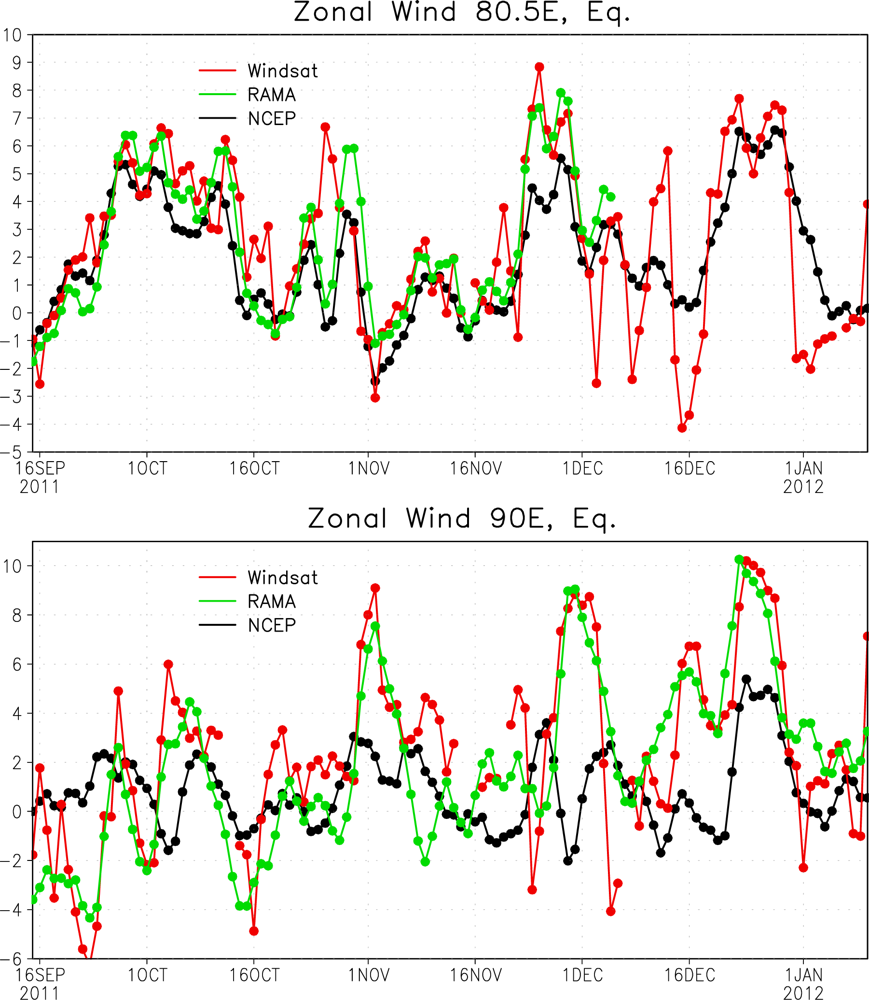
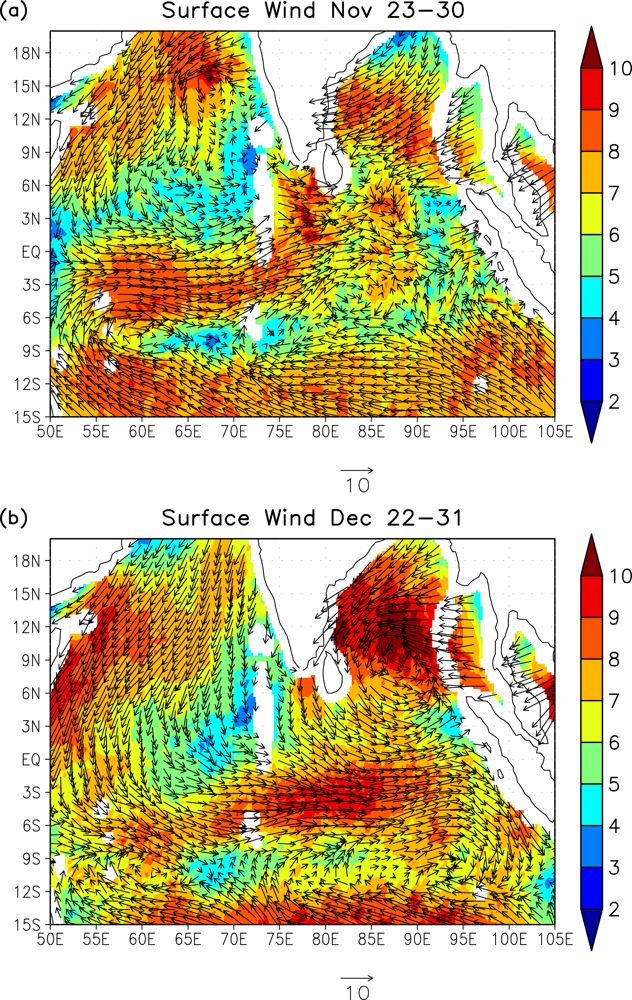
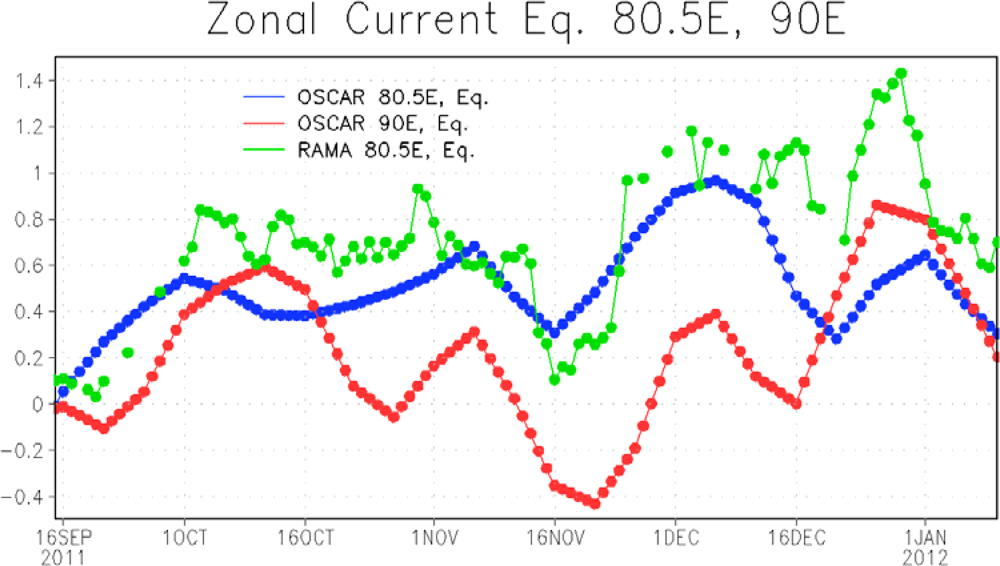
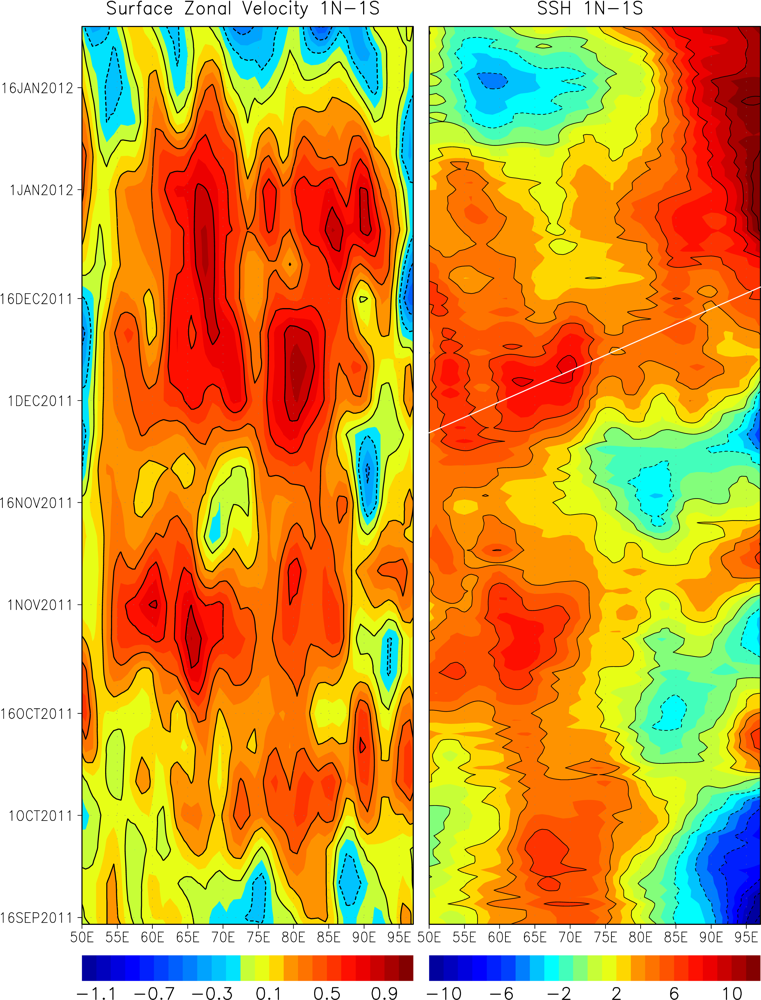
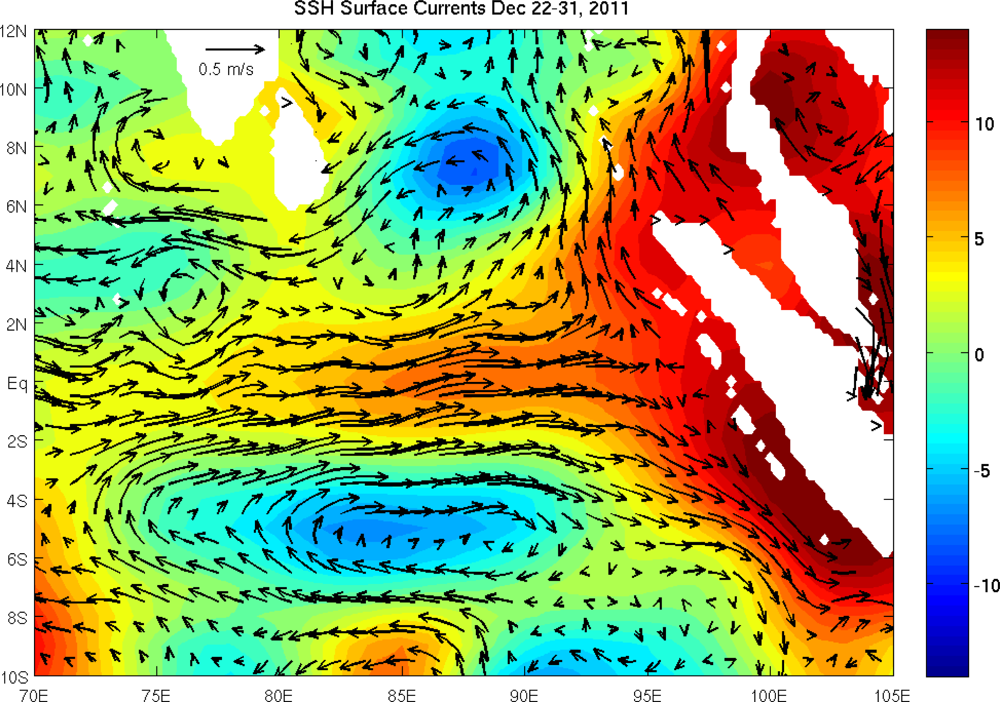
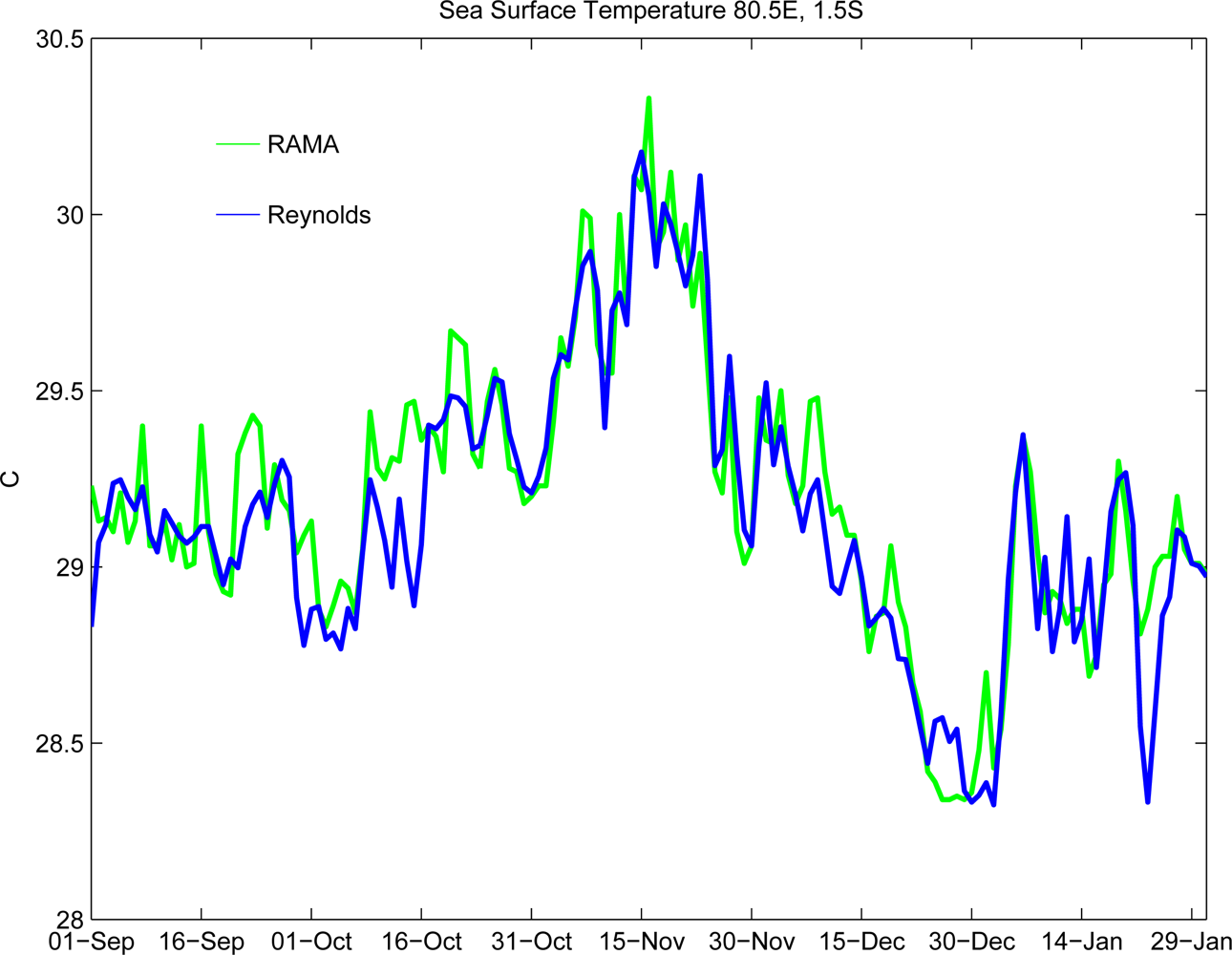
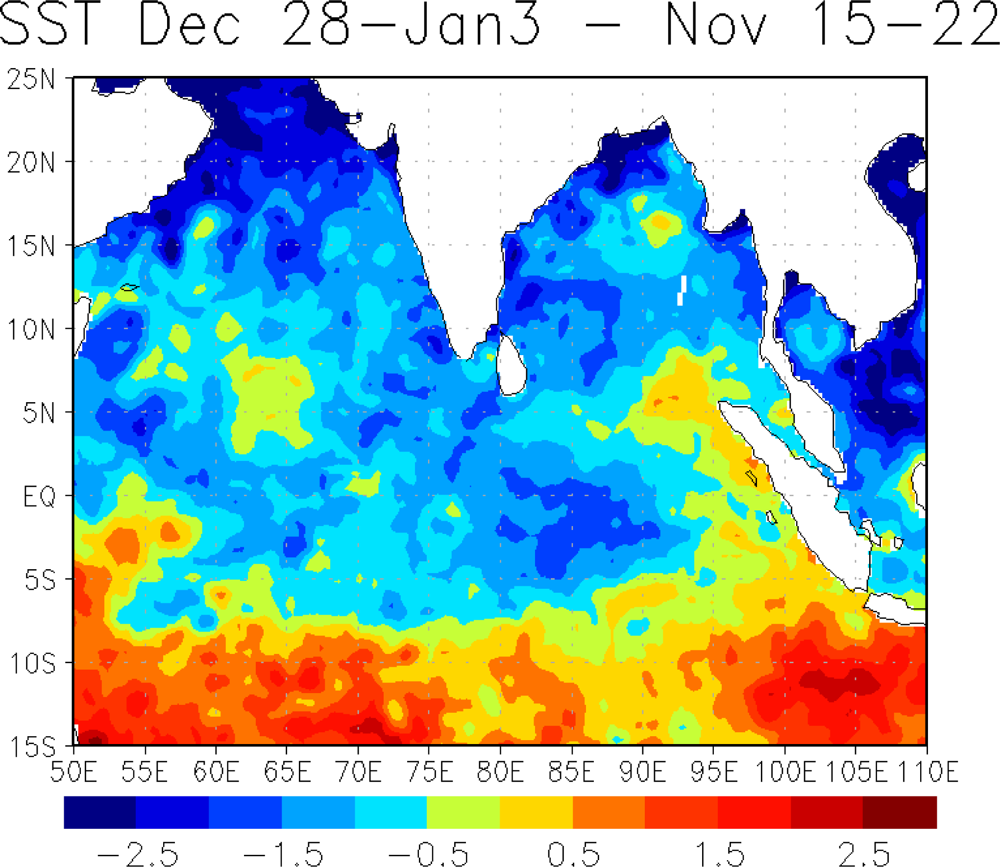
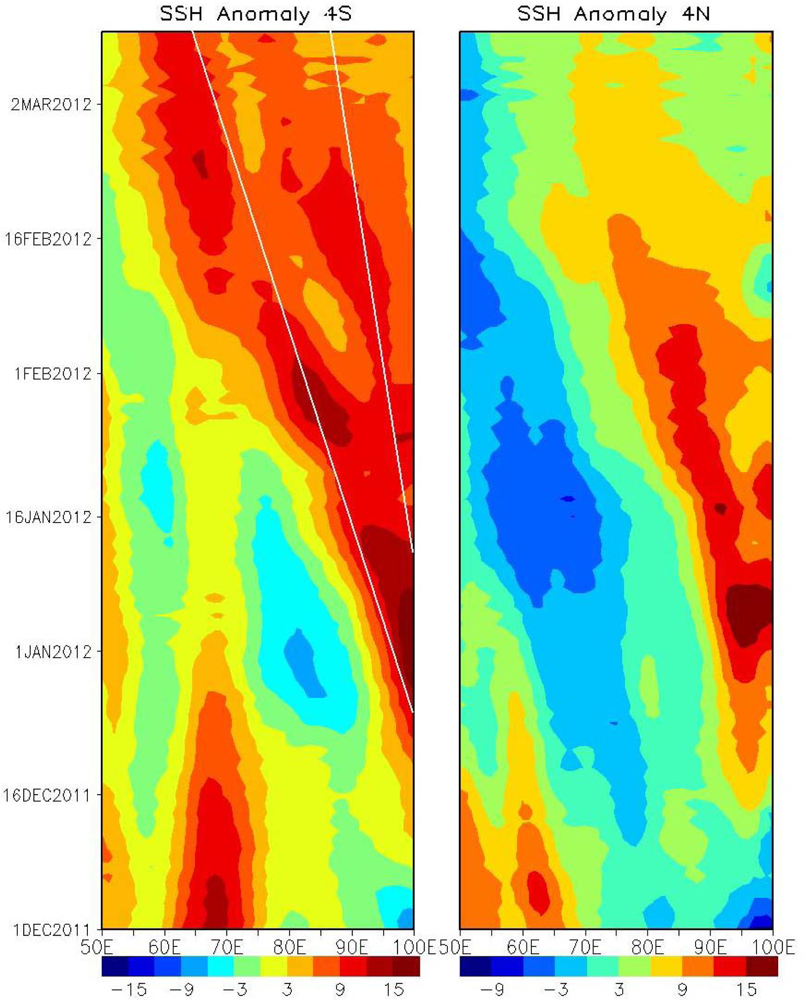
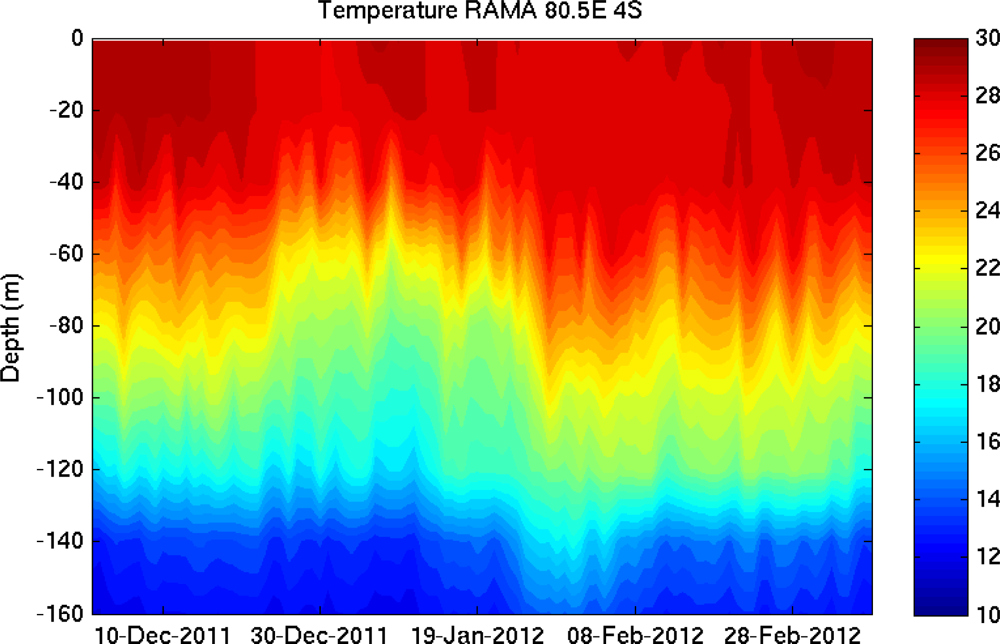
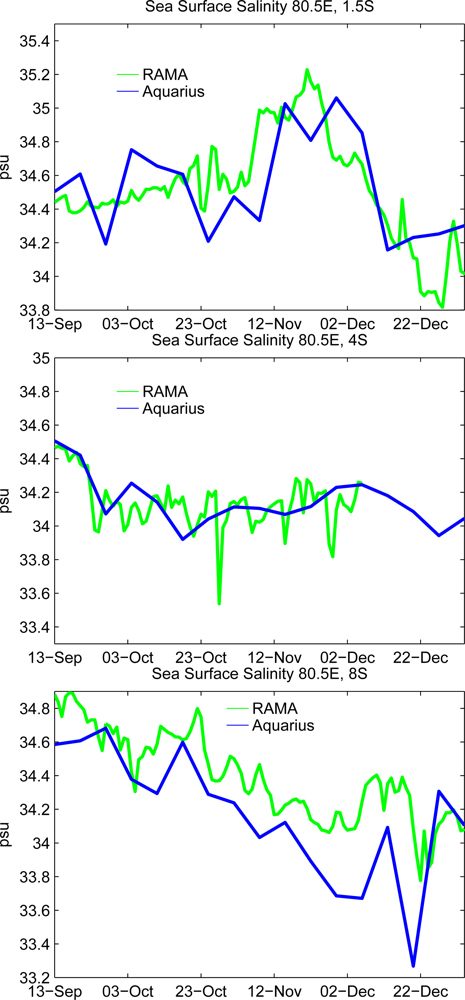
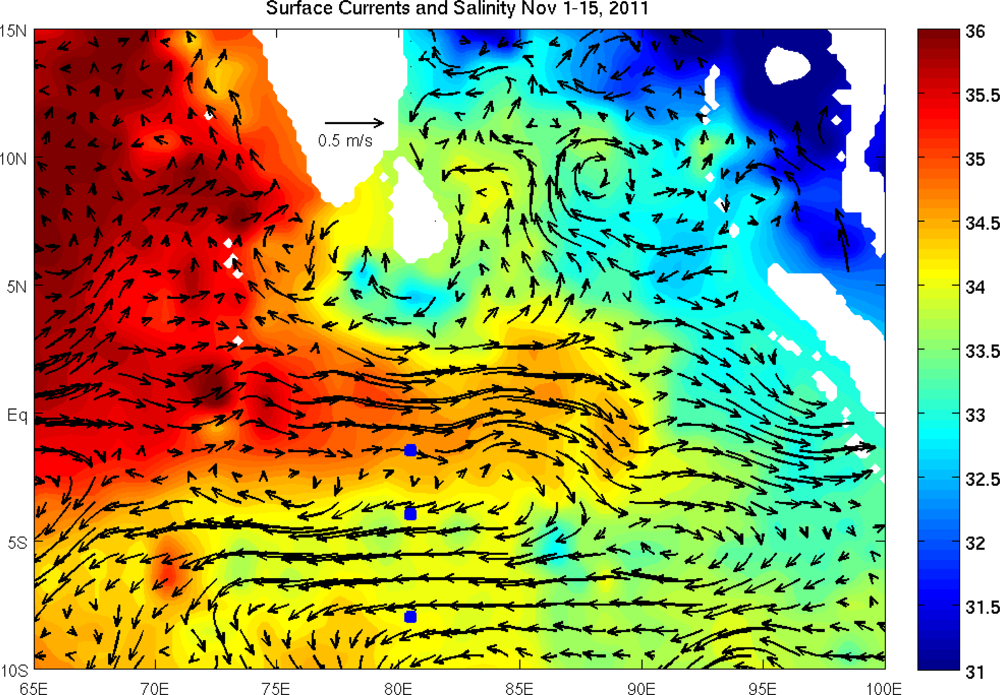
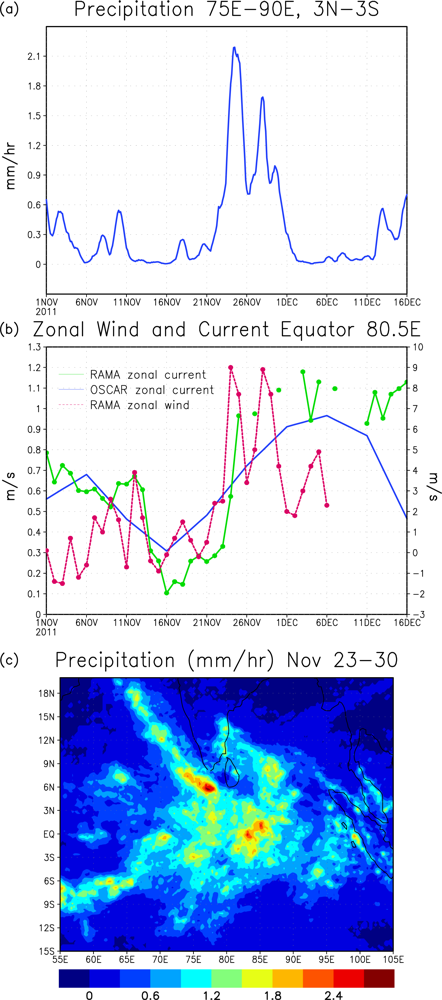
© 2013 by the authors; licensee MDPI, Basel, Switzerland This article is an open access article distributed under the terms and conditions of the Creative Commons Attribution license ( http://creativecommons.org/licenses/by/3.0/).
Share and Cite
Shinoda, T.; Jensen, T.G.; Flatau, M.; Chen, S.; Han, W.; Wang, C. Large-Scale Oceanic Variability Associated with the Madden-Julian Oscillation during the CINDY/DYNAMO Field Campaign from Satellite Observations. Remote Sens. 2013, 5, 2072-2092. https://doi.org/10.3390/rs5052072
Shinoda T, Jensen TG, Flatau M, Chen S, Han W, Wang C. Large-Scale Oceanic Variability Associated with the Madden-Julian Oscillation during the CINDY/DYNAMO Field Campaign from Satellite Observations. Remote Sensing. 2013; 5(5):2072-2092. https://doi.org/10.3390/rs5052072
Chicago/Turabian StyleShinoda, Toshiaki, Tommy G. Jensen, Maria Flatau, Sue Chen, Weiqing Han, and Chunzai Wang. 2013. "Large-Scale Oceanic Variability Associated with the Madden-Julian Oscillation during the CINDY/DYNAMO Field Campaign from Satellite Observations" Remote Sensing 5, no. 5: 2072-2092. https://doi.org/10.3390/rs5052072



